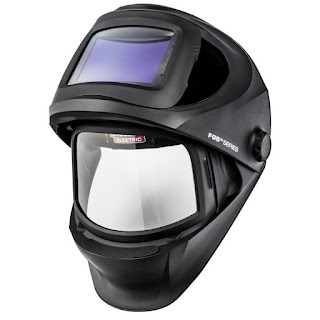Over the years, galvanized steel has become notorious owing to its fumes that could be hazardous to the welder’s health. Though it is recommended to be done with any welding process before the galvanizing process, which leads to a corrosion-resistant product, in some cases, steel has to be welded after it is galvanized.
It is imperative to research on your own before welding so that you can ensure the safety and health of the welder.
Personal Protection
When welding galvanized steel, the first thing to do is to assure that you have all the necessary protective gear such as gloves, welding helmets, leather jackets, and steel toe boots with you according to the process involved. You could check out Welding Corner for some amazing variety of welding helmets under $100.You need one extra item for personal protection while welding galvanized steel, and that is a respirator. It is necessary to prevent the inhalation of zinc oxide fumes that are caused by galvanizing. Inhaling these fumes can cause metal fume fever, and the symptoms of flu can be severe even if you inhale just barely. Chronic overexposure to zinc oxide can be fatal.
So, always weld in an airy and well-ventilated area even while using a respirator.
How to make quality welds for galvanized steel?
Other than health risks, welding galvanized steel can lead to other issues. The zinc coating present on the steel could compromise the quality of the weld. Zinc makes it difficult to penetrate which gives the weld an untidy and spongy look.Another common issue is the lack of fusion at the toes of the weld. It is crucial to use proper welding processes and techniques to reduce the risks. It is better to remove the zinc coating from the area you have to weld first. If that is not possible, then select a filler material that is created for zinc-coated materials.
Another thing to help you with quality welds is the type of galvanizing process that you use for coating the steel. Different techniques of steel galvanizing leave a different amount of zinc on the surfaces. The thicknesses of the coating vary. Usually, hot-dipped galvanized steel and steel that has been sprayed on with zinc thermal have thicker coating compared to electroplated steel.
Going with a zinc electroplated steel can lead to better weld compared to zinc thermal sprayed or thicker-coated hot-dipped steel.
The zinc coating present at and around the weld area burns away during the welding process. This removes the area unprotected and uncoated. Due to this, the unprotected weld can cause expedient weld failure. If there is a need for corrosion resistance after welding, you must perform a post-weld process like re-galvanizing or painting the material.
All of the application specifics should be on your fingertips like the galvanized method being used and the environment where it is going to happen, the selection of welding process, and the criteria on which the welding process will be measured.
Doing everything mentioned above can make the process of galvanizing steel easy and safe.
Going with a zinc electroplated steel can lead to better weld compared to zinc thermal sprayed or thicker-coated hot-dipped steel.
How to prevent corrosion when welding galvanized steel?
How do you maintain corrosion-resistant properties after welding galvanized steel? It is a common problem.The zinc coating present at and around the weld area burns away during the welding process. This removes the area unprotected and uncoated. Due to this, the unprotected weld can cause expedient weld failure. If there is a need for corrosion resistance after welding, you must perform a post-weld process like re-galvanizing or painting the material.
Last Thoughts
Through the implementation of the right protective measures, you can effectively and safely galvanize steel. Read the safety codes and analyze them. Also, pay attention to getting the right protective gear. Make sure that your welding helmet fits you, or else you will be distracted.All of the application specifics should be on your fingertips like the galvanized method being used and the environment where it is going to happen, the selection of welding process, and the criteria on which the welding process will be measured.
Doing everything mentioned above can make the process of galvanizing steel easy and safe.




